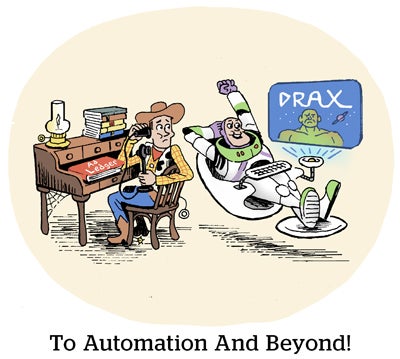Clean rooms are ad tech’s answer to data privacy. But they can also give advertisers more accurate reach and frequency measurement through first-party audience matching.
Disney has been building out its clean room for roughly a year, and announced an integration with VideoAmp on Thursday, which will bolster clean room measurement with VideoAmp’s TV viewership data.
An advertiser, for example, can match its own first-party data with Disney’s audience graph and receive deduplicated campaign measurement based on ad exposures across Disney channels.
This measurement integration is the latest addition to Disney’s clean room capabilities.
When Disney first announced its data clean room last year, the focus was on planning and insights, such as pre- and post-campaign analytics. Over the summer, Disney started prioritizing audience activation when it integrated with The Trade Desk to make its first-party data available programmatically using UID 2.0.
And this latest integration with VideoAmp is Disney’s “first big foray in the measurement space [via] our clean room,” Dana McGraw, SVP of audience modeling and data science at Disney Advertising, told AdExchanger. Disney’s primary focus is “making sure measurement is accurate across our inventory and audience graph,” she added.
Accurate measurement requires identity, which in turn must be handled in a privacy-safe way via clean rooms.
That’s why clean rooms are integral to making sure the future of TV measurement is a “long-term solution, not a right-now solution,” McGraw said.
VideoAmp’s TV viewership graph tracks ad exposures at the device level and commingles set-top box and automatic content recognition (ACR) data across its household footprint. Combined with digital ad logs from Disney, VideoAmp is able to use ACR data to deduplicate audience reach and frequency across streaming and linear channels, said Michael Parkes, president of VideoAmp.
Disney creates “synthetic” (or anonymized) user IDs based on its audience graph and, for the clean room use case, provides these IDs to VideoAmp, which measures reach and frequency against that audience across Disney’s linear and streaming properties using its TV viewership graph.
This clean room integration enables more precise measurement of streaming campaigns in real time, said Geoffrey Calabrese, chief investment officer of Omnicom Media Group’s North American biz, because the agency can “understand impressions in the context of both OMG’s and Disney’s household identity for reach and frequency measurement.”
OMG was the first agency to test the integrated solution with Disney and VideoAmp this quarter.
This type of solution appeals to buyers because first-party data saves advertisers the trouble of “having to make multiple hops through third-party identity graphs,” Disney’s McGraw said, which makes for more accurate audience matches.
“We expect superior match [rates] overall because we’re using [clean room] methodology that allows us to understand explicitly what data attributes we’re matching against,” OMG’s Calabrese said.
Disney’s partnership with VideoAmp is about getting advertisers a higher return on ad spend with more accurate insights into audience performance and outcomes, Parkes said – which is what buyers have been asking for.
Audience matching using clean rooms is a “significant advancement from the capabilities of legacy TV advertising,” Calabrese added, because demo-based measurement from third parties doesn’t translate into identity. But a clean room can allow for identity-based measurement. And the more data available about an ad exposure, the more accurate and actionable the measurement.

















